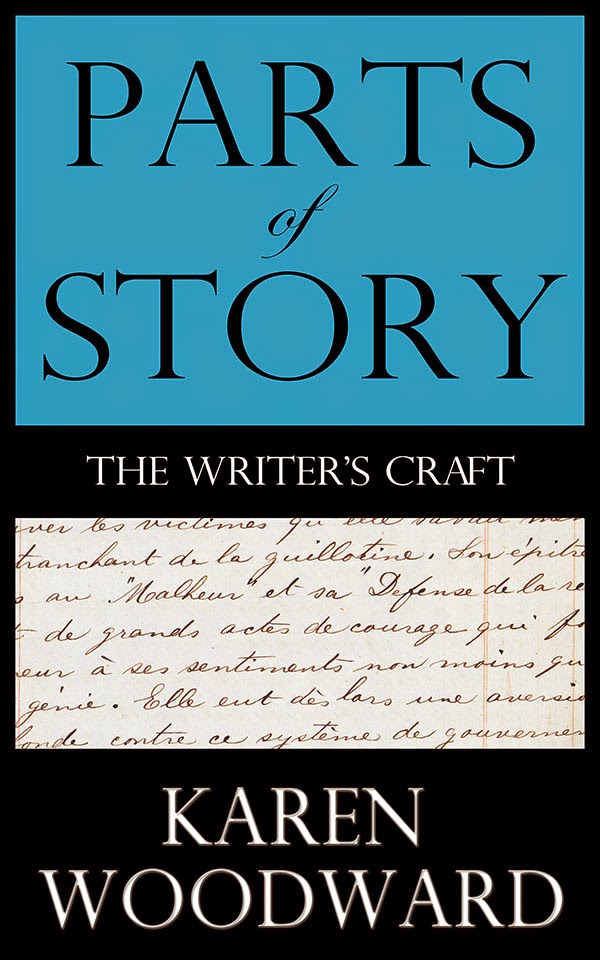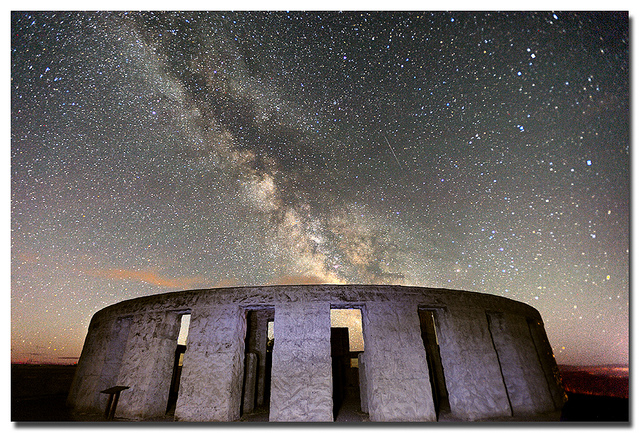Conflict
E.M. Forster, in Aspects of the Novel, writes:
"Let us define a plot. We have defined a story as a narrative of events arranged in their time-sequence. A plot is also a narrative of events, the emphasis falling on causality. "The king died and then the queen died" is a story. "The king died, and then the queen died of grief" is a plot. The time-sequence is preserved, but the sense of causality overshadows it. Or again: "The queen died, no one knew why, until it was discovered that it was through grief at the death of the king." This is a plot with a mystery in it, a form capable of high development."[5]
Let's examine these two sentences.
a. The king died and then the queen died.
b. The queen died, no one knew why, until it was discovered that it was through grief at the death of the king.
What does (b) have that (a) lacks? In a word: conflict.
(a) is simply a statement of events. As Forster writes, all that a reader can ask--or wonder--in this case is "What happens next?" But, that said, I can't imagine that there could be any sort of genuine curiosity. One could continue by writing, "Then the page died and the cook died." And so on. One could relentlessly take out the entire royal court, but it wouldn't make an interesting story.
(b) is more than a simple statement of events. One can imagine that the queen had a goal: not dying. Something interfered with that goal. What was it? Her grief at the death of the king. (Here we have an antagonistic force--grief--rather than an antagonist.)
Conflict is what moves a story forward. If a story were a car then conflict would be its engine.
There are various ways conflict can occur but any kind of conflict will involve someone or something who is being prevented from attaining what they desire.
I think this is why
some storytellers hold that the antagonist, rather than the protagonist, is the most important character in a story. But not to the reader. The reader is rooting for the protagonist (or should be). No, the antagonist is the most important person
to the storyteller. Why? Because the antagonist is going to create the conflict that drives the story forward.
If nothing prevents the protagonist from getting what they want then all we have is a series of events. Alfred wants a piece of cake and gets it. Beth wants a cup of rich black coffee and gets it, and so on. Boring!
Without something to prevent the protagonist from getting what she wants a story would be about as interesting as watching paint dry.
The conflict should be unique.
Although we do want conflict--lots of it!--we don't want to go with easy conflict. We want conflict that is unique to our protagonist.
For example, in every episode of the TV series, Monk, there was conflict. Lots of conflict. One of Monk's two main goals was to get back on the police force (the other was to find out who killed his wife, Trudy). Unfortunately, he was his own worst enemy. His obsessions, his compulsions, his multitude of fears and quirks would get in his way and prevent him from achieving his goal.
One reason that television show worked so well was because the conflict was unique. It was a unique, believable, situation.
Internal Opposition
In order to have a conflict that is unique the opposition to the character's goals must be unique. In Monk's case, the unique opposition was internal. It came from his own limitations, his multitudinous compulsions and phobias. I mean, the man was scared of milk!
Monk was his own worst enemy. His catchphrase said it all: It's a gift and a curse. His uncanny abilities of observation were a direct result of his many phobias, his obsessions. If he lost them he would be normal, sure, but he would no longer excel at solving crime.
So if we see Monk's fears and compulsions as his internal opposition, we see that this did not change through the series. These were the same in every single episode.[6] That said, these fears, these compulsions, were challenged and explored in new ways each episode. The show was kept fresh and interesting because the external opposition Monk encountered varied from episode to episode.
External Opposition
Anything external--exterior--to the character, anything that stands between them and the acquisition of their goal, counts as external opposition. The man who gets punched by a boxer to prevent him flirting with the boxer's girlfriend has just encountered external opposition.
But this external, opposing, force doesn't have to take the form of a person. It could just as easily be a tornado or an illness. Or, as we saw in the beginning of this chapter, grief.
In a television show like Monk the external opposition usually came from two sources: the murderer and someone from within the police department who, for whatever reason, didn't want Monk on the case. These obstacles--both of which were strongly linked to the internal opposition Monk faced (his phobias and compulsions)--combined to form the storytelling engine that drove the episode forward.
Disaster
The overwhelming majority of scenes end in disaster. Given this, why do readers keep turning pages?
It may seem counterintuitive but, as I've said, readers are drawn through a story because their hopes for the protagonist are constantly thwarted by the antagonistic force.
Try-Fail Cycles
That seems depressing and perhaps a wee bit fatalistic, doesn't it? If the protagonist is constantly thwarted, if he never gets what he's going for, if he never achieves his goal, why don't readers just write him off and give up? Why don't they close the book and stop reading?
Here's why:
1. The reader keeps turning pages because the stakes keep increasing.
It's ghoulish, but when there's a wreck on the side of the road people slow down to look. Even if it's nothing but a crumpled fender people slow down. Remember in school, if a fight broke out there was no shortage of onlookers. Similarly, in the circus, why do you think some trapeze acts used to be done without a net? Because it upped the stakes and, in so doing, increased the level of excitement, of curiosity.
2. The protagonist only failed because the antagonist was so strong, so brilliant and, perhaps, because the antagonist wasn't playing fair.
In other words, it's not the protagonist's fault. The deck was stacked against him.
Which is not to say that the protagonist should ever make this excuse. He shouldn't. He mustn't. He needs to blame himself for the failure even if there was no way he could have avoided it. Only the antagonist is allowed to whimper and shake his fist, spluttering: It wasn't fair!
3. It isn't so much that the protagonist has failed, it's that he almost succeeded.
I don't have the space to go into them here, but in another chapter I will give examples of try-fail cycles. But, briefly, think of Indiana Jones and Raiders of the Lost Ark. (Lately I've been watching more contemporary movies, movies such as The Winter Soldier, in an effort to give you more up-to-date examples, but if there was one thing that Raiders excelled at, it was try-fail cycles.)
The hero doesn't fail dismally, he almost succeeds. He's so close to succeeding you could taste it. If it wasn't for something completely out of his control, if it wasn't for bad luck, he would have pulled it off.
4. Though the majority of scenes end in disaster and the major goal is never won before the end of the story, minor goals are achieved.
There's a sequence in the middle of Raiders that illustrates this nicely. Indy is trapped in the Well of Souls which has become a snake pit. There are a lot of snakes. Keep in mind that Indy is scared of snakes, that's his minor flaw, his comical--ironic--quirk. His goal in this sequence is to get out of the Well of Souls.
That goal, to escape the Well of Souls, is what I'll call a sequence goal. A number of scenes and sequels are daisy-chained together, one flowing into the other, and his goal in all of them is to escape the Well of Souls.
He does. (There was really no question that he wouldn't, it was only a question of how.) After Indy escapes--immediately after--he takes up pursuit of the story goal: finding the ark and bringing it back home.
Throughout the movie Indy achieves many of his sequence goals and he seems to get closer, at times tantalizingly close, to achieving his main goal. But he never does, not until the end.
As soon as the
story question is answered, as soon as the protagonist saves the girl, finds the treasure, solves the mystery, that's it. The story is over. Done. Before that happens, though, the protagonist will have all kinds of mini-goals. He'll fail to achieve most of those as well, but he will succeed a few times. But only a few!
I'll talk more about try-fail cycles in another chapter and we'll look at a writer's tool I use often:
Yes, BUT; No, AND.
Thanks for reading! This post is a rough draft of one of the chapters in my upcoming book,
Parts of Story. I welcome any and all questions and (constructive) comments.
Links/References
5. P.D. James, in Talking About Detective Fiction, reproduces Forster's passage, above, and then comments:
"To that I would add, "Everyone thought that the queen had died of grief until they discovered the puncture mark in her throat." That is a murder mystery, and it too is capable of high development."
P.D. James' comment has more to do with plot and the respectability of the murder mysteries--the genre--as literature, but the quotation was just too good not to include in a footnote!
6. That's not quite true. In at least one episode Monk lost his fears, his compulsions, due to medication he took. Also, in certain episodes his fears became very much worse. But for the most part, his fears and phobias--his psychological condition--did not change.











